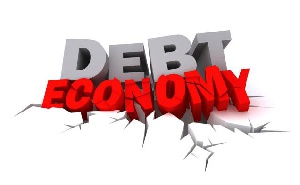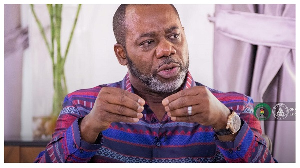If the economy worked like the more recent quartz watch which functions electronically, then predictions of future events of growth will be more accurate than it currently is.
As it stands, the economy works more like the older mechanical watch which evolved in Europe in the 17th century. The watchmakers tell us that it is driven by a spring, called the mainspring, which must be wound periodically to keep its accuracy. As it works in concert with other devices or parts like the balanced wheel, which oscillates back and forth at a constant rate and the escapement which releases the watches wheels to move forward and also makes the ‘ticking’ sound. The mechanical watch must also be cleaned periodically by a skilled watchmaker to keep it heading forward and working normally.
WHERE IS THE ECONOMY HEADED?
Where the economy is headed is what the economists talk about and make decisions on to influence growth or slow down or halt a recession. In a similar manner, where available funds should be channeled to (invested or spent), is what the financiers talk about and also make decisions on to provide loans, working capital, project financing or sovereign debt, just to put it all simply. That is their forte!
The core interests which occupy the minds of both the economist and the financier become the issues of concern for various stakeholders within the economy – the businessman, the banker, the petty trader, the manufacturer, the investment banker, the policy maker, the SME owner and several others.
But as previously noted, due to the uncertainty associated with expected timing and the desired impact of policy prescriptions, developing an appreciation of the economy and the factors driving and shaping it by understanding how the dynamics of both the economic and finance indicators are interrelated helps. According to the Bank of Ghana Working Paper on Estimating a Composite Indicator of Economic Activity for Ghana, 2003, “Economic policy requires a high degree of foresight because policy actions typically take effect only after a long lag.”, hence “following movements of the local economy could at times be frustrating and a daunting experience”.
In my last article published last week Monday, we noted that whereas economics provides investors with the big picture tools like inflation and GDP in understanding and analyzing markets and companies to forecast growth; we learn that finance provides an offshoot by focusing on analyzing prices, sharing risks, valuing and projecting cash flow, calculating the fair value of investment products and using the financial markets to ensure better investment decision making.
We obviously couldn’t have exhausted all the key points of such an all-important topic in one article. So, in this article, we will seek to highlight the effects of some of the so called leading and lagging indicators on the wider market which, for good or bad, impact our investments, our businesses and our livelihoods.
When the so called leading indicators (cause) occur, they predict the future trends and the lagging indicators (effect) come in to confirm what has happened i.e. the historical performance of the economy.
MONETARY POLICY IN THE LEAD
Much as no indicator is perfect in predicting events and so must be analyzed in relation to others, monetary policy, we are told is one of the most important leading economic indicators.
The Bank of Ghana (BoG) monetary policy objective seeks to stabilize and the economy prices by lowering inflation which current medium term target is 8% +/- 2. At year end, December 2016 inflation was about 15.4%, falling short of the target of 13%.
Monetary policy also seeks to achieve economic growth and increase in employment.
As a lead economic indicator, and given its desired objective of price stability, when inflation stays above target for some reason, like the skilled watchmakers, the policy makers will increase the monetary policy rate (MPR) with the view to influencing interest rates so that inflation can be reduced towards the desired target “within a reasonable period of time without creating undue instability in the economy” (BoG). From a low of 12.5% in 2006, the MPR has been rising steadily with current rate of 25.5%, aimed at chasing down inflation.
So like the requirement for the mainspring in the mechanical watch to be wound and cleaned periodically, with its effects on the other parts or devices of the watch, when the MPR is increased the effects on other indicators include an increase in general interest rates which will reduce the supply of money due to the increased cost of funds. Money supply is a measure of how much liquidity (cash and equivalents) is in the economy. This is just by way of still keeping things simple, without going into the details of the three (3) measures of money.
The above scenario sheds some light on how monetary policy as a leading economic indicator affects inflation, a lagging economic indicator in the economy. Eventually when inflation targets are achieved due to a reduction in economic activity, prices of goods and services as finance indicators would reduce, all other things being equal.
Inflation is a threat to long-term investors and fixed salary earners because it erodes the value of future Cedis, it can stifle economic growth, and can cause a rise in prevailing interest rates. Increases in inflation also lead to a high cost of living. So when inflation rises, policy makers are forced to push the monetary policy rate up as shown in the diagram above.
And for interest rates, the higher it is, the more expensive goods and services become, hence the slower the level of business activities in the economy. It is one of the most commonly used phrases in consumer finance and fixed income investments
DIAGRAM SOURCE: ICPL Research
The government of Ghana’s crowding out of the private sector through excessive borrowing on the domestic market also increases the rate of interest. Thankfully, T-Bill rate are falling signaling a desire to reduce government borrowing activity on the domestic market.
CONCLUSION
The fortunes of most, if not all, business activities cannot be separated from the fortunes of the economy.
The watchmakers of Switzerland tell us that since the 1970s, quartz watches have taken over most of the watch market, and mechanical watches are now mostly a high-end product, purchased for aesthetic reasons, appreciation of their fine craftsmanship, or as a status symbol.
Who knows, maybe analysis of the indicators of the economy and subsequent policy prescriptions could be done better through some form of modern technology to ensure accuracy of the predictions of future desired economic and hence, finance indicators!
Business News of Wednesday, 1 February 2017
Source: b&ft.com

















